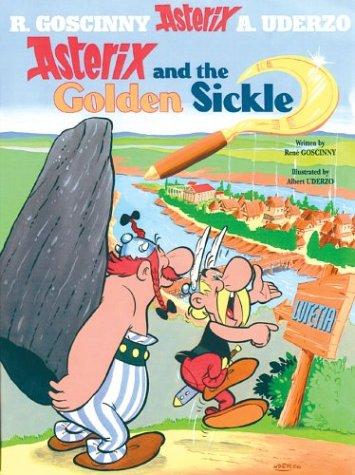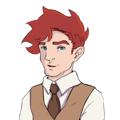Literally Graphic reviewed Asterix and the Golden Sickle (Asterix) by René Goscinny (Adventures of Asterix (2))
Review of 'Asterix and the Golden Sickle (Asterix)' on 'Goodreads'
3 stars
According to Wikipedia Rene Goscinny was a comic editor and writer of Jewish Polish descent who created the Asterix comic book series. He also worked on Lucky Luke (which I have not read at all) with Morris. He was born in Paris France in 1926, his family moved to Buenos Aires Argentina shortly there after, he lived in New York for a time after the death of his father but moved back to France and joined the French army in order to avoid service in the United States army. He died in 1977 in Paris France. Despite some critiques of Astrix it's nice to know that not all classic French comic creators turn out to be Nazi collaborators (I'm looking at you Herge).
Looking up the artist Albert Uderzo, he was born in France to Italian immigrants in 1927 and is apparently still alive. Too young to fight Germany before …
According to Wikipedia Rene Goscinny was a comic editor and writer of Jewish Polish descent who created the Asterix comic book series. He also worked on Lucky Luke (which I have not read at all) with Morris. He was born in Paris France in 1926, his family moved to Buenos Aires Argentina shortly there after, he lived in New York for a time after the death of his father but moved back to France and joined the French army in order to avoid service in the United States army. He died in 1977 in Paris France. Despite some critiques of Astrix it's nice to know that not all classic French comic creators turn out to be Nazi collaborators (I'm looking at you Herge).
Looking up the artist Albert Uderzo, he was born in France to Italian immigrants in 1927 and is apparently still alive. Too young to fight Germany before the invasion, he met Goscinny after he returned to France and the two apparently became very good friends. Collaborating first on a much less timeless work called Oumpah-pah, which was serialized in the Franco-Belgian comics magazine Tintin, and appears to include many of the same common stereotypes of the indigenous people of Turtle Island as the comic named Tintin and other work of the time period (and sometimes even now). If you are interested in own voice depiction of indigenous people check out my list on goodreads or just google it, as I always mention it's a really exciting and growing comics niche.
Astrix, an apparent instant hit, was initially serialised in Pilote starting on 29 October 1959 and has been running (on and off, by a couple different sets of people) ever since. The first trade was initially published in 1961.
While it appears in every following volume, I swear the description does change and this isn't what it says on the back of every book. Anyway, to summarize: The year is 50 bc and all Gaul is occupied. Only one small village of indomitable Gauls still holds out against eh invaders. But how much longer can Astrix, Obelix, and their friends resist the mighty Roman legions of Jelius Casear? Anything is possible with a little cunning plus the druid Getafix's magic potions! Their effects can be truly hair-raising...
The number one reason I would recommend this book is that it is, in my opinion anyway, pretty funny. It's also a pretty anti authoritarian, this first volume at least could also be possibly considered anti-imperialistic and/or anti-colonialist. Unfortunitly the way that race is depicted, especially visually, can become pretty dated at times. All the characters in this first volume are 100% what most people these days would consider white. Although, assuming that my brain is not completely failing me, racist caricature of the indigenous people of north america and of dark skinned people are both employed later on. I'll certainly be looking into this further as I continue through the series.
Unsurprisingly gender and sexuality are not touched on in this series (at least so far). Although the clash between the Romans and the Gauls certainly plays itself out in ways I see as representing class in the modern world, with most of the Romans being depicted as Urban Elites compared to the modest and rural Gauls.


